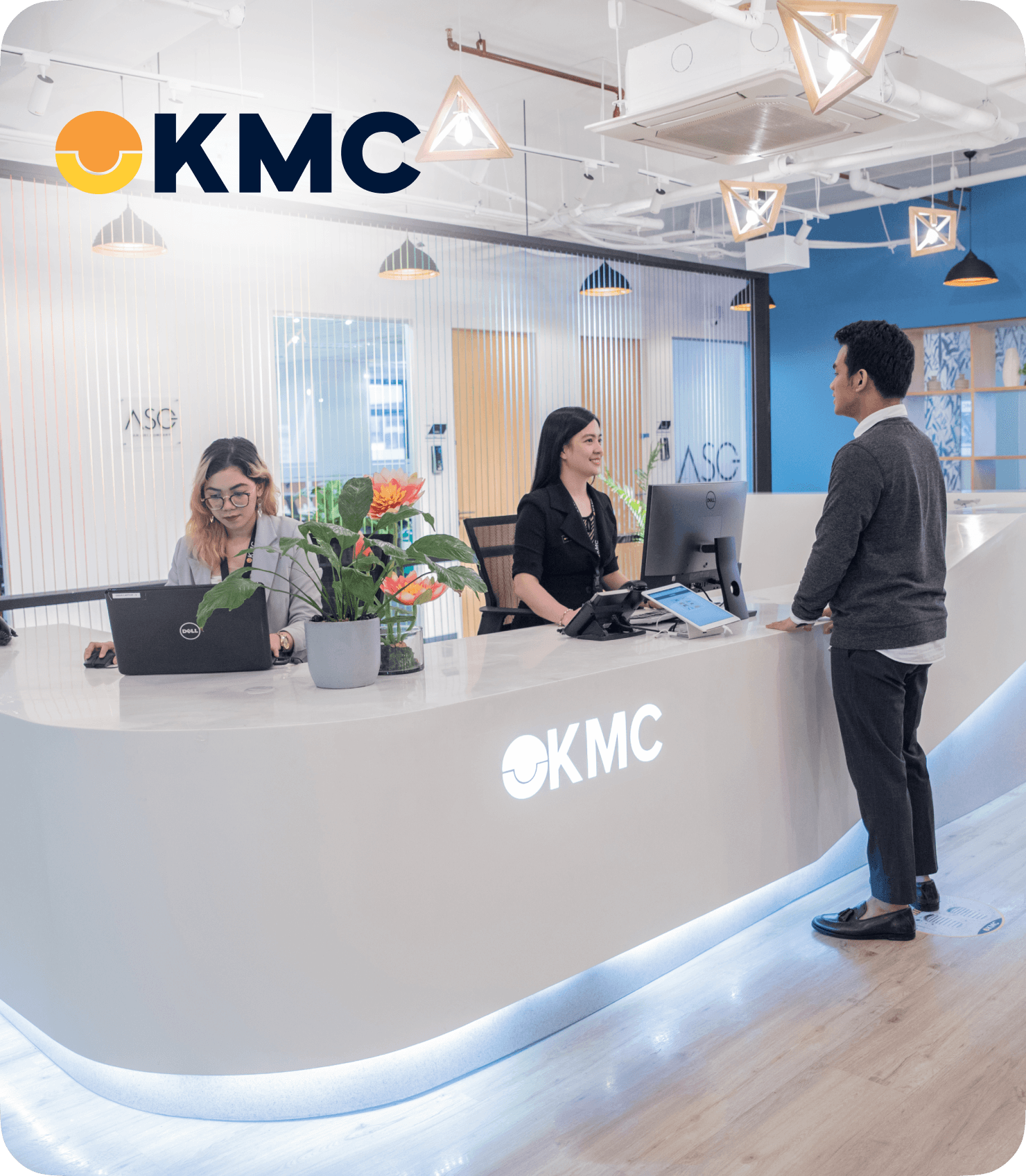Full-Stack EOR Advantage – From Compliance to Culture
EOR 2025 — The End of Transactional Outsourcing and the Rise of Compliance-Led Models




The Market Has Changed — and So Have the Stakes
For years, the Employer of Record (EOR) market has thrived on cost efficiency and speed. Companies prioritized quick setups and low overhead, often choosing the cheapest providers. But by 2025, the narrative has shifted. Compliance—not cost—is the new competitive edge.
Governments are closing regulatory gaps, auditors are tightening scrutiny, and investors now prioritize governance in every due-diligence review. For many organizations, the real risk isn’t expansion—it’s exposure.
Expansion looks easy on paper—until it isn’t.
For many leaders, the first taste of cross-border growth comes with an unexpected side effect: operational chaos disguised as progress.
It often starts with struggling to keep up with complex, country-specific compliance. Each new market brings its own labor codes, tax rules, and statutory benefits. What seems like a small oversight—an outdated contract or a missed filing—can suddenly escalate into a full-blown audit. Teams scramble, investors ask questions, and attention shifts from building to firefighting.
Then comes the domino effect: managing too many vendors—and no single source of accountability. HR uses one system, payroll another, IT sits somewhere else. Each vendor claims success within their scope, yet employees still face delays, mismatched data, and unresolved issues. You start leading not a company, but a network of disconnected providers—each operating on its own timeline.
The cracks deepen when payroll enters the picture. Losing time and trust to payroll errors and lack of transparency becomes more than an accounting problem—it’s an employee experience problem. Late deposits, miscalculations, and opaque deductions can erode credibility overnight. When pay becomes unpredictable, so does loyalty.
Even when payroll is consistent, people aren't. Many offshore setups face high turnover and weak cultural alignment. Employees may be legally employed but emotionally detached from the brands they represent and work for. Tasks get done, but ownership and culture fades. Engagement drops and what began as a cost-efficient solution quickly becomes a cycle of rehiring and retraining.
While culture fades quietly, bureaucracy stalls loudly. Delayed expansion due to entity setup and legal barriers often leaves leaders stuck in limbo—ready to scale but waiting on permits, licenses, or banking approvals. Competitors move first, winning clients and local talent while your launch date keeps slipping.
Technology, meant to simplify things, sometimes makes them worse. As teams spread across time zones, many companies find themselves exposed to downtime, data risk, and IT vulnerabilities. Shared credentials, unstable networks, and reactive support transform convenience into liability. It’s only when something breaks—when data leaks or systems fail—that the hidden cost of weak infrastructure becomes visible.
By this stage, what began as an exciting expansion story often turns into a juggling act of vendors, audits, and attrition. Each fix introduces another dependency. Governance starts to blur, and suddenly you’re damaging reputation through poor governance and compliance oversight—not through malice, but through misalignment. In today’s transparent market, even a minor labor or ESG lapse can ripple across investor confidence and employer reputation.
These aren’t isolated failures—they’re symptoms of a fragmented system. The modern enterprise is learning that the hardest part of global hiring isn’t finding talent; it’s integrating it.
That’s why the next evolution of workforce strategy isn’t just outsourcing—it’s orchestration. The Full-Stack EOR model unites compliance, payroll, IT, and culture under one accountable framework—so businesses can scale globally without losing control, visibility, or trust.
Addressing these risks requires more than outsourcing. It calls for an employment infrastructure where compliance, accountability, and employee experience are engineered into every layer.
The EOR industry’s next chapter won’t be written by the fastest or cheapest provider—it will be defined by those that can balance agility with accountability. As 2025 unfolds, compliance has become more than a legal checkbox; it’s now the new measure of trust, resilience, and long-term value.
From Chaos to Clarity: The Strategic Power of Full-Stack Integration
After the dust of expansion settles, leaders start asking a different question—not how fast they can grow, but how well they can stay in control. That’s where integration begins to matter.
The first shift happens in turning compliance complexity into a managed framework. Every country plays by its own rules, and every rule carries its own penalties. What once felt like a local HR task now defines enterprise risk. A Full-Stack EOR transforms this chaos into structure—converting scattered legal obligations into a predictable, audit-ready framework. Different markets, different laws—but the same standard of accountability.
Next comes from vendor chaos to full employment integration. What good is speed if every process lives with a different provider? Payroll says it’s an HR issue. HR blames IT. IT blames timing. No one owns the outcome. Integration replaces fragmentation. A Full-Stack EOR unites these moving parts under one accountable partner—so leaders manage outcomes, not vendors.
Once structure and ownership are in place, the lens turns inward—to creating transparency in payroll and finance. Payroll isn’t just about numbers; it’s about trust. Late deposits or hidden deductions erode confidence faster than any policy change. Full-Stack EORs introduce audit-grade transparency into payroll cycles, making every computation traceable and every remittance compliant. Finance gains clarity; employees regain confidence.
But even the most compliant and transparent systems mean little if people don’t stay. That’s why human-first retention as a strategic outcome has become the new metric of success. Traditional outsourcing treats engagement as an afterthought—something to “add on” once operations are stable. Human-First EORs flip that approach. They embed wellness, learning, and connection directly into the employment model, creating stability that feels human, not transactional.
Expansion should accelerate opportunity, not bureaucracy—yet most companies lose months to paperwork before their first hire. Simplifying market entry without entity setup changes that. A Full-Stack EOR offers an immediate, compliant bridge into new markets, eliminating the lag between decision and deployment. Instead of waiting on incorporation or banking approvals, businesses can hire today and scale with confidence tomorrow.
Of course, no system can thrive without strong infrastructure. As distributed teams grow, many organizations discover they’re engineering security and continuity into operations only after something breaks. Networks drop, data drifts, and IT support becomes reactive. A Full-Stack EOR bakes resilience into the foundation—equipped with enterprise-grade IT, role-based access controls, ISO-certified safeguards, and KMC’s 8 Gbps Never-Go-Down Network®. Security isn’t a feature—it’s an expectation.
Finally, modern enterprises recognize that governance and sustainability are no longer boxes to tick—they’re signals of credibility. Building governance and ESG into the employment DNA ensures that every process, policy, and partnership reflects transparency and ethical intent. Full-Stack EORs embed these values from the start, aligning labor practices with ESG and B-Corp standards so that growth happens responsibly, not reactively.
Because in the end, expansion is never just about getting bigger—it’s about getting better. The companies that endure are the ones that integrate.
The Full-Stack EOR Advantage isn’t a service; it’s a shift—from fragmented outsourcing to connected leadership, from compliance firefighting to confident governance, from people management to people’s empowerment.
How KMC Defines the Human-First, Full-Stack EOR
KMC’s model goes beyond compliance—it creates true extensions of your business.
End-to-End Employment Management
From recruitment to payroll, KMC provides a single, integrated EOR solution that ensures compliance, consistency, and control at every stage.
Enterprise-Grade Compliance
Each process is aligned with DOLE, BIR, and PEZA requirements, supported by ISO 27001 & 9001 certifications and B-Corp governance standards. KMC builds audit-ready compliance frameworks that scale with your organization.
Integrated Workspace and IT Infrastructure
With over 1.2 million sq ft across 30+ prime sites, including PEZA-accredited offices and 24/7 IT support, KMC ensures your team operates securely and efficiently. The Never-Go-Down 8 Gbps Network® delivers enterprise-level reliability for hybrid and remote teams.
Human-First Employee Experience
Through wellness programs, continuous learning, and cultural integration initiatives, KMC builds engaged, loyal teams who perform—and stay. Learn how KMC’s retention programs achieve an 86 % employee retention rate.
Data Security & Continuity
KMC’s data protection protocols ensure business continuity and information integrity through advanced access controls, device provisioning, and disaster-recovery systems.
The outcome: compliance that scales, infrastructure that never fails, and teams that stay.
Why Full-Stack EOR Outperforms Traditional EOR and BPO Models
Category | Traditional EOR | BPO / Outsourcing | KMC Full-Stack EOR |
Scope | Employment & payroll | Service-specific staffing | End-to-end employment ecosystem |
Compliance Depth | Legal minimum | Limited visibility | ISO-certified & DOLE/PEZA-aligned |
Team Ownership | Shared / indirect | Vendor-controlled | Client-direct culture & management |
Retention Focus | Low | Moderate | 86 % employee retention rate |
Infrastructure | None | Outsourced facility | 30+ KMC workspaces + CASA housing |
Scalability | Administrative | Functional | Strategic & cultural |
KMC’s Full-Stack EOR model bridges what both EORs and BPOs lack—control without risk, culture without compromise.
The ROI of Integration
When companies consolidate their global employment operations under one Full-Stack EOR, they gain measurable returns at every level.
Operational ROI
- Hire and onboard in weeks, not months
- Replace multiple vendors with one accountable partner
- Reduce compliance risk through proactive governance
Human ROI
- 86 % retention through human-first design
- Productivity uplift from stable, well-supported teams
- Employees identify with your brand—not a vendor’s

Strategic ROI
- ESG-aligned, audit-ready systems trusted by investors
- Scale teams across five countries under one model
- Strengthen global brand equity through ethical employment
Explore KMC’s ROI of Integration framework to see how centralized employment delivers efficiency and resilience.
Why Leaders Choose KMC
Executives don’t select KMC because it’s inexpensive—they choose it because it’s complete, compliant, and built for scale.
Executive Concern | KMC Solution |
“We need compliance that holds up under audit.” | ISO-certified, DOLE-aligned, audit-ready systems. |
“We want to build teams, not contractors.” | Direct employment with cultural integration and leadership enablement. |
“We can’t afford downtime.” | 8 Gbps Never-Go-Down Network® + 24/7 IT support. |
“We want an extension of our business, not another vendor.” | Dedicated HR, legal, and facilities teams operating as part of your organization. |
See how global leaders in fintech, SaaS, and cybersecurity partner with KMC to scale secure, high-performing offshore teams.
The Human-First Advantage
At the heart of every KMC partnership lies a simple truth: people stay where they feel seen, supported, and secure.
Through ergonomic offices, mental-health initiatives, learning paths, and community programs, KMC transforms offshore employment into human connections.
It’s how KMC maintains one of the highest retention rates in APAC and why clients describe their teams as true extensions of their headquarters.
Talk to a Full-Stack EOR specialist today and discover how KMC can help you build, retain, and empower your offshore team—compliantly and confidently.
